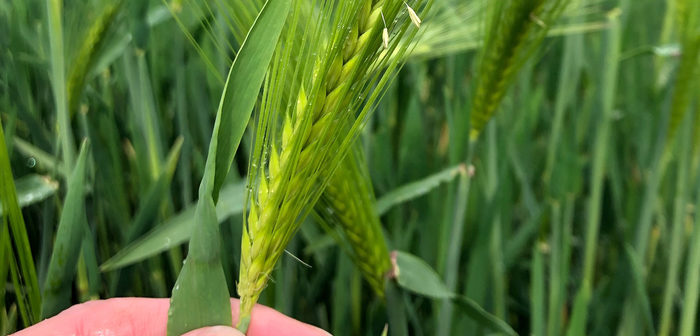Responding to high fertiliser costs starting with variety choice – that is one of the themes in the Syngenta cereal variety plots at this year’s Arable Event (15 June 2022 near Weston-under-Lizard).
Peter Hawkins, Syngenta West Midlands area manager, says although grain prices are high, high fertiliser costs mean maintaining good crop margins is a fine balance.
“Deciding which winter wheat and barley varieties to plant this autumn sets the scene for this,” says Mr Hawkins. “In these times of risk, growers have to decide whether to try new varieties that may promise extra yield, or to stick with established varieties with a record of delivering reliable performance on-farm over a number of different seasons.”
With growers in the West of the country often facing different considerations to growers in the East – such as greater wet weather disease pressure and more mixed arable and livestock farms – Mr Hawkins says Syngenta plots will demonstrate a range of wheat and barley varieties offering attractive characteristics for the Western half of the country.
For example, he says the established winter feed wheats Graham and Gleam, which are being demonstrated, both have a track record of yielding well in the West, with Graham’s Western region yield on the AHDB Recommended List (RL), in particular, standing out. There is plenty of trials data backing up each variety, he points out.
Newer winter feed wheat
“For growers looking to try a newer winter feed wheat, then SY Insitor, launched in 2020 and which is also in the plots at the event, is now gaining a following. It yielded very well last harvest, yields very well on light land and has an exceptional specific weight of 78.2 kg/hl on the AHDB RL. Usefully in these times of high fertiliser prices, when there is interest in using fertiliser more efficiently by improving nutrient scavenging from soil, SY Insitor is also being evaluated as a vigorous-rooting variety.”
Also for growers looking for varieties with vigorous root growth, Mr Hawkins says there will be a selection of hybrid winter feed barleys in the plots.
Hybrid barley is noted for its hybrid vigour and yield, he says. But usefully it is also able to use nitrogen efficiently to build yield, he adds, and its vigorous growth aids grass weed suppression.
“There is plenty of trials work showing how well hybrid barley suppresses black-grass, but trials in Staffordshire have also shown it to be competitive against ryegrass. And elsewhere we have seen its competitiveness against brome. Also of interest for the West, hybrid barley has useful straw output – offering the potential for extra income if selling off-farm, or for using at home on mixed farms.”
Included among the hybrid barleys in the Arable Event plots, says Mr Hawkins, will be the popular hybrid SY Kingsbarn and a new hybrid, SY Thunderbolt, launched last summer which has a high treated yield in the West region on the AHDB RL.
As well as varieties, crop protection technologies are also being exhibited by Syngenta at the event.
“Linked to fertiliser costs and the role for improving nutrient scavenging, we will be demonstrating the fungicide seed treatment, Vibrance Duo, which has repeatedly been shown to improve root growth in wheat and barley. With growers also tending to drill winter wheat and winter barley later to reduce pressures from grass weeds and barley yellow dwarf virus, Vibrance Duo has also been shown to deliver well established crops in later drilling situations.
“Visitors coming to the Syngenta stand will also be able to learn more about our new foliar cereal fungicide which is in development – AdepidynTM Technology,” Mr Hawkins adds.




